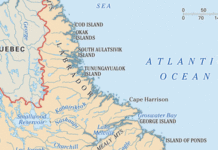In a partnership with GE Renewable Energy, E.ON is repowering its Panther Creek I and Panther Creek II wind farms in West Texas.
The repowering includes the replacement of a significant portion of the projects’ components, effectively increasing the annual production for all 172 wind turbines, which total 258 MW.
“We’re excited to embark on our first repowering project in the U.S.,” says Silvia Ortin, E.ON’s chief operating officer for North America. “The repowering of our Panther Creek wind farms provides us with the opportunity to increase lifetime earnings from the sites. In addition, it allows us to capture up-to-date turbine efficiency improvements and a resulting increase in power generation.”
The erection and commissioning of the project will be conducted by GE as part of an equipment delivery contract. The repowering is expected to be complete in the third quarter of 2019.
“GE and E.ON worked collaboratively to develop a repower strategy for Panther Creek that will extend the life of the wind farms and materially increase the [annual energy production] of the existing turbines,” says Vikas Anand, general manager of GE’s onshore wind business in the Americas. “The twofold benefit of repower will ensure that renewable energy is available to E.ON’s customers for years to come.”
Panther Creek I, which came online in September 2008, consists of 95 GE 1.5 MW SLE turbines for a total of 142.5 MW. It is the first of a three-phase project in West Texas and is located in Howard and Glasscock counties.
Panther Creek II, which came online in December 2008, consists of 77 GE 1.5 MW SLE turbines for a total of 115.5 MW. Its footprint spans parts of Glasscock and Sterling counties.





It would be nice to have more technical details and comparison between the current and new turbines – repowering after 10 years seems pretty quick.
Example technical details would be MW for the new turbines, expected capacity factor for the new turbines vs actual CF for current ones, what is the minimum wind speed to achieve rated output for current and new turbines, whether any type of hybrid upgrade was considered (battery and or solar), how much transmission capacity is available, et cetera.